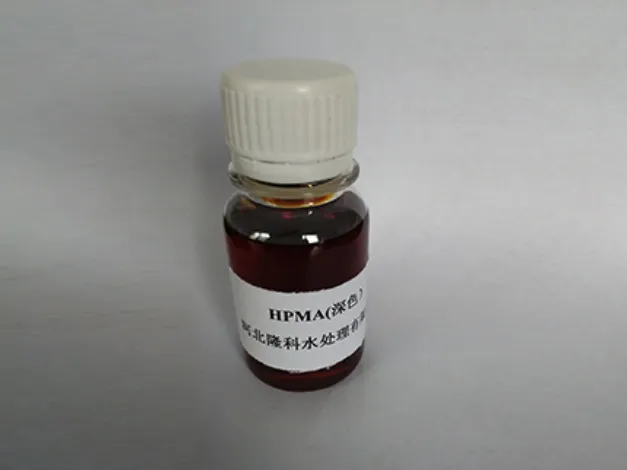Exploring the Applications and Properties of HEDP Acid in Various Industries
HEDP Acid An Overview of Its Properties and Applications
HEDP, or Hydroxyethylidene Diphosphonic Acid, is a highly effective phosphonate compound widely used in various industrial applications. Known for its chelating properties and ability to form stable complexes with metal ions, HEDP plays a crucial role in water treatment, scale inhibition, and even in the formulation of detergents and cleaners. This article seeks to delve into the properties, applications, and environmental considerations regarding HEDP acid, emphasizing its significance in multiple sectors.
Properties of HEDP Acid
HEDP is a colorless to slightly yellow liquid with a molecular formula of C2H8O7P2. It has a relatively low molecular weight of 206.04 g/mol and is soluble in water. One of its primary chemical characteristics is its ability to act as a chelating agent, meaning it can bind to metal ions such as calcium, magnesium, and iron, forming stable complexes. This property makes HEDP particularly valuable in preventing scale formation in industrial systems.
HEDP is known for its excellent thermal stability and performance in alkaline and neutral conditions, making it suitable for a vast array of applications. Importantly, its pH range of effectiveness extends from acidic to neutral, which is beneficial in settings where varying pH levels are encountered. Additionally, HEDP has a low toxicity profile, making it a preferred choice for industries aiming to minimize environmental impact.
Applications of HEDP Acid
1. Water Treatment HEDP is extensively utilized in water treatment facilities to prevent the formation of scale in boilers and cooling towers. By chelating calcium and magnesium ions, it effectively inhibits the precipitation of mineral scales, thus enhancing the efficiency and longevity of industrial equipment.
2. Oil and Gas Industry In the oil and gas sectors, HEDP is used to control scale deposition in pipelines and processing systems. Its ability to maintain efficient flow rates and reduce the frequency of maintenance interventions is critical for operational sustainability.
hedp acid

3. Detergents and Cleaners HEDP also finds application in the formulation of detergents and cleaning agents. Its chelating properties help to enhance the cleaning efficiency by binding to metal ions that may interfere with the performance of surfactants, ensuring that surfaces are cleaned effectively.
4. Agricultural Applications HEDP is used in agriculture, particularly in formulations for fertilizers and crop protection products. Its capacity to chelate micronutrients facilitates their availability to plants, thereby enhancing nutrient absorption and growth.
5. Biomedical Applications The chelation properties of HEDP have also caught the attention of the biomedical sector. Its potential for binding metal ions makes it a candidate for various therapeutic applications, including targeted drug delivery systems.
Environmental Considerations
While HEDP is recognized for its low toxicity, there are still environmental considerations that must be addressed. The usage of phosphonates, including HEDP, can lead to eutrophication in aquatic environments if not managed properly. Eutrophication occurs when nutrient levels rise excessively, leading to harmful algal blooms that deplete oxygen in water bodies, thereby harming aquatic life. Thus, the regulation of HEDP usage, particularly in large-scale applications, is vital to prevent potential environmental repercussions.
Moreover, as industries increasingly move towards sustainability, the development of biodegradable alternatives to HEDP is becoming a focus. Research is ongoing to explore bio-based phosphonates that could serve similar functions with reduced environmental impact.
Conclusion
HEDP acid is a versatile and effective compound with a wide range of applications across various industries, particularly in water treatment, oil and gas production, and cleaning formulations. Its chelating properties play a pivotal role in preventing scale formation and enhancing the efficacy of various processes. However, as with any chemical compound, it is essential to consider the environmental impacts and strive for sustainable usage practices. Continuous research and innovation in the field of phosphonates will likely yield more environmentally friendly alternatives in the future, ensuring that the benefits of compounds like HEDP can be enjoyed without compromising ecological integrity.
-
Water Treatment with Flocculant Water TreatmentNewsJun.12,2025
-
Polymaleic AnhydrideNewsJun.12,2025
-
Polyaspartic AcidNewsJun.12,2025
-
Enhance Industrial Processes with IsothiazolinonesNewsJun.12,2025
-
Enhance Industrial Processes with PBTCA SolutionsNewsJun.12,2025
-
Dodecyldimethylbenzylammonium Chloride SolutionsNewsJun.12,2025





